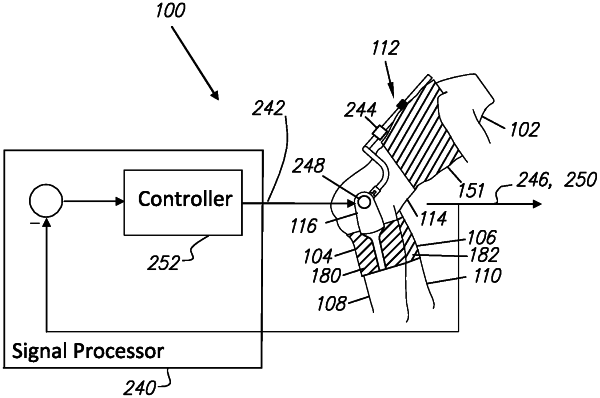| CPC A61F 5/02 (2013.01) [A61F 5/01 (2013.01); A61H 3/00 (2013.01)] | 32 Claims |

|
1. A trunk supporting exoskeleton configured to be worn by a person to reduce muscle forces in a back of the person during forward lumbar flexion, the trunk supporting exoskeleton comprising:
a supporting trunk, configured to be coupled to a trunk of the person;
two thigh links, configured to couple to thighs of the person and rotatably coupled to the supporting trunk in a manner that allows for flexion and extension of the two thigh links relative to the supporting trunk;
two active torque generators, capable of imposing a resisting torque between the supporting trunk and the two thigh links;
a sensor generating an input signal representing the angle of the supporting trunk from a vertical line; and
a signal processor,
wherein the signal processor is configured to produce a control signal for the two active torque generators based on the input signal from the sensor,
wherein when the person bends forward in a sagittal plane such that the supporting trunk extends beyond a predetermined angle from the vertical line, the signal processor produces the control signal for the two active torque generators and the two active torque generators impose the resisting torque between the supporting trunk and the two thigh links, causing the supporting trunk to impose a force against the trunk of the person thereby reducing the bending moment of the back of the person during a forward move,
wherein the control signal increases the resisting torque imposed by the two active torque generators as the angle of the supporting trunk from the vertical lines increases, and
wherein when the supporting trunk does not extend beyond the predetermined angle from the vertical line, the two active torque generators do not impose a resisting torque between the supporting trunk and the two thigh links over an entire range of motion of the two thigh links.
|